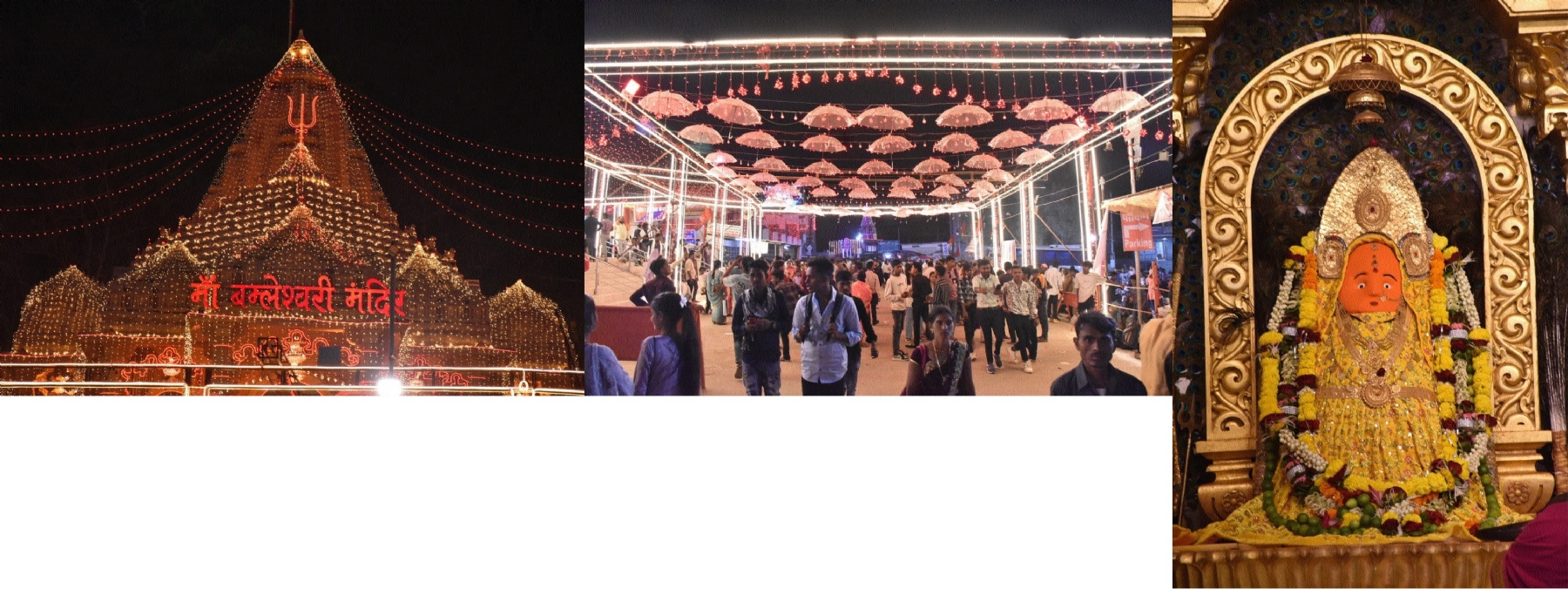Maa Bamleshwari temple draws devotees amid service pandal shortages
| Date :05-Apr-2025 |

By G Ravindra Mudiraj
Rajnandgaon :
In the picturesque mountain range of Dongargarh in Rajnandgaon district, the revered Maa Bamleshwari Devi Temple stands tall at 1,610 feet, drawing devotees from across India. Recognised as one of the country’s important Shaktipeeths, the temple is undergoing development under the Central Government’s Prasad Yojana, with a budget allocation of Rs 48.43 crore. As part of this project, a tourist facility center in the shape of Sriyantra is under construction.
Dongargarh, strategically positioned on the Mumbai-Howrah railway line, is easily accessible from Raipur (106 km) and Rajnandgaon (35 km). Historically known as Kamakhya Nagari, Kamavati Nagar, and Dungrajya Nagar, it has long been a hub of spiritual and religious significance.
The temple is particularly popular during Navratri, attracting thousands of devotees from Maharashtra, Madhya Pradesh, Chhattisgarh, and beyond.
A ropeway and nearly 1,000 steps provide access to the temple, with most devotees preferring to undertake the climb on foot as a mark of devotion. The temple complex also houses the Choti Maa Bamleshwari Temple on the plains below, regarded as the younger sister shrine. The serene surrounding, dotted with lush green forests, hills, and water bodies like the Kamkandla pond, adds to the spiritual allure of the site.
In 1976, the temple was entrusted to a public trust, which has since been instrumental in its development and management. The grand temple structure, inspired by the Akshardham Temple of New Delhi, features eight entrance gates, 44 intricately carved pillars, and a sanctum sanctorum adorned with Ambaji marble. The trust has also facilitated the construction of multiple dharamshalas, lodges, and food services for visiting devotees.
However, a noticeable decline in service pandals along the pilgrimage route has affected the overall experience for devotees this Navratri season. Previously, over 50 service pandals were set up between Anjora and Dongargarh by social welfare organizations and volunteers. This year, the number has dwindled to 15-20, with inadequate facilities such as medical aid, refreshments, and resting areas.
Devotees Rajesh Sharma, Ganesh Sahu, and Yogendra Nirmalkar from Raipur, who have been visiting the temple for six to seven years, expressed disappointment at the lack of amenities. While a municipal corporation-operated pandal was found to have proper cooling arrangements, most others lacked essential services.
The decline in service pandals is attributed to waning interest from social organisations and limited administrative support. The tradition of setting up these pandals dates back decades, offering rest, medical aid, and refreshments to pilgrims. Previously, volunteers provided foot massages, applied ointments on blisters, and offered tea and snacks. Now, many of these facilities are missing, leading to a drop in the number of visitors walking on foot to shrine.
Despite these challenges, the temple management has ensured elaborate festive decorations. According to the Dongargarh Temple Trust, the Badi Maa Bamleshwari Temple was adorned with flowers, while the Choti Maa Bamleshwari Temple was decorated with 650 kg of fruits, including sweet lime, oranges, pineapples, melons, grapes, and apples.
So far, three lakh devotees have visited the temple this Navratri season.
District authorities have taken measures to manage the crowds and maintain security. Collector Sanjay Agarwal stated that arrangements have been reviewed and necessary instructions issued. SP Mohit Garg confirmed the deployment of over 1,100 police personnel to ensure smooth proceedings. Additionally, ten designated parking zones have been established, and a police control room has been set up in Chhirpani for crowd management.
Despite the challenges posed by declining service pandals, the deep-rooted faith in Maa Bamleshwari continues to draw devotees, reinforcing the temple’s significance as a spiritual and cultural landmark of Chhattisgarh.






